Rajasthan, often called the Land of Kings, is a treasure trove of awe-inspiring forts that seem to whisper tales of a glorious past. These aren’t just stone structures—they’re living chronicles of Rajputana bravery, artistry, and ingenuity. Picture massive walls that have weathered centuries, delicate carvings that tell stories, and designs so clever they’d make modern architects envious. Let’s wander through these legendary forts and discover what makes each one a masterpiece.
1. Jaisalmer Fort: The Golden Fortress
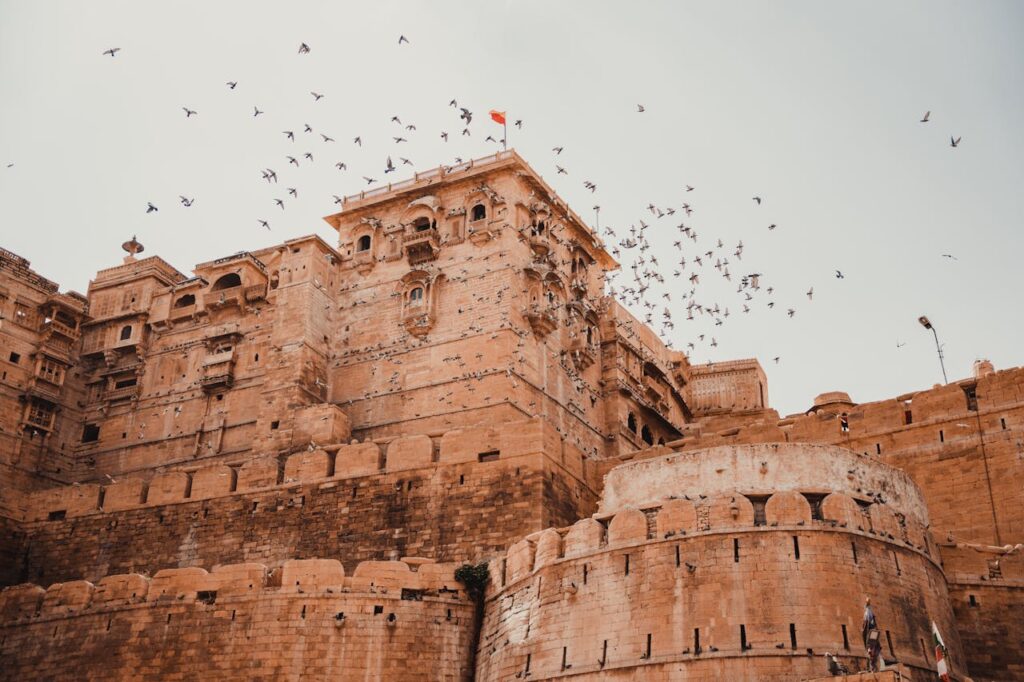
Built in 1156 AD by King Jaisal, Jaisalmer Fort is one of the largest forts in India. Known as Sonar Quila or Golden Fort, it derives its name from the yellow sandstone used in its construction, which glows beautifully under the sun. The fort sits atop Trikuta Hill, offering breathtaking views of the golden sands of the Thar Desert. Unlike most forts, it remains a living fort, with houses, shops, and temples inside its walls. The interior design features intricately carved balconies, jharokhas, and lattice windows, which allow for ventilation while maintaining privacy. Many homes inside still retain traditional Rajasthani décor with colorful frescoes and wooden furnishings.
2. Mehrangarh Fort: The Citadel of the Sun
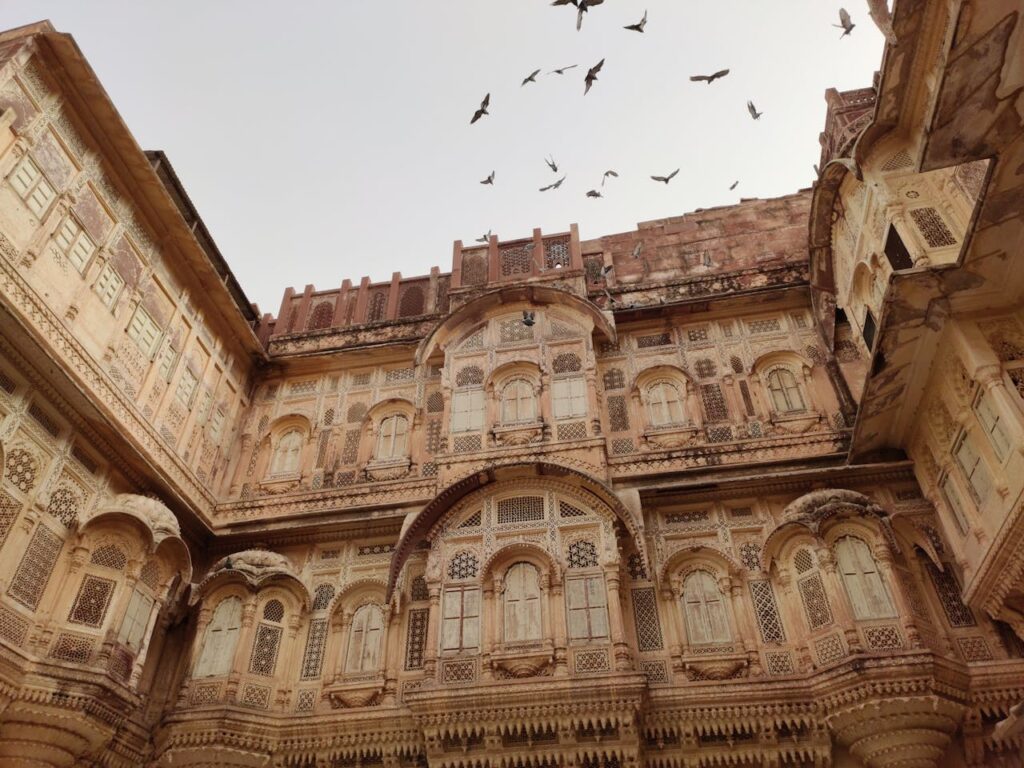
Perched on a hilltop in Jodhpur, Mehrangarh Fort is an architectural wonder that boasts intricate carvings, sprawling courtyards, and imposing walls. Built in the 15th century by Rao Jodha, the fort offers a panoramic view of the blue city below. The fort’s gates, such as Jai Pol and Fateh Pol, mark historical victories, while its museum showcases royal palanquins, costumes, and weaponry. The interiors of Mehrangarh are adorned with stunning mirror work, gold leaf paintings, and elaborate ceiling designs. The Phool Mahal (Flower Palace) and Moti Mahal (Pearl Palace) feature breathtakingly detailed murals and gold-embellished ceilings, reflecting the royal grandeur.
3. Ranthambore Fort: The Fortress of the Wild
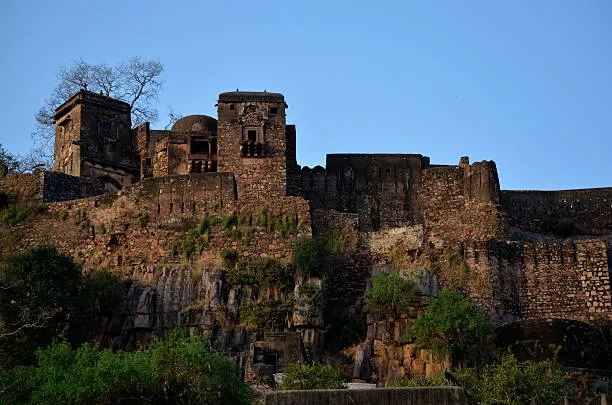
Located within Ranthambore National Park, this 10th-century fort is known for its strategic positioning amidst dense forests. The fort features massive gates, high walls, and ancient temples, such as the Trinetra Ganesh Temple. Its rugged construction ensured its endurance against numerous invasions, making it one of Rajasthan’s most well-preserved forts. The interiors are relatively austere compared to other forts, reflecting its military significance. However, the presence of Hindu and Jain temples within the complex introduces elements of religious art and traditional stone carvings.
4. Amer Fort: The Jewel of Jaipur
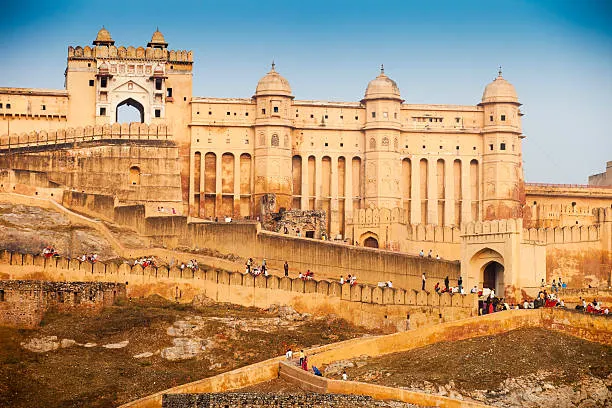
Recognized as a UNESCO World Heritage Site, Amer Fort is a masterpiece of Rajput and Mughal architecture. Built with red sandstone and marble, the fort boasts ornate halls like the Sheesh Mahal (Mirror Palace), where tiny mirrors create a dazzling effect when illuminated. The grand Ganesh Pol entrance and intricate frescoes add to its beauty. The Diwan-i-Khas (Hall of Private Audience) and Diwan-i-Aam (Hall of Public Audience) display a blend of Mughal and Rajput styles, with marble inlay work, floral motifs, and intricate jaali (screen) designs.
5. Chittorgarh Fort: The Stronghold of Rajput Valor
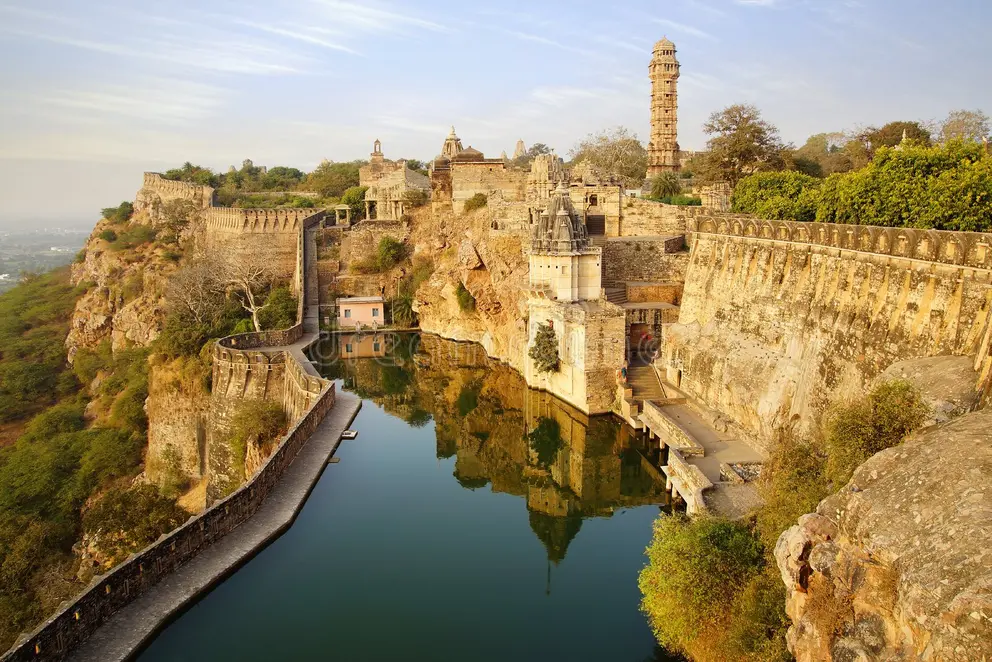
Spread across 700 acres, Chittorgarh Fort is known for its history of heroic battles and royal sacrifices. The fort houses several architectural gems, including the 9-story Vijay Stambh (Victory Tower), Padmini’s Palace, and the Meera Temple, dedicated to the famous devotee-saint Meera Bai. The fort’s extensive water reservoirs highlight the advanced water conservation techniques of its time. Inside, the palaces feature intricately carved stone walls and grand courtyards, with elements of Rajput architecture including chhatris (domed pavilions) and colorful murals.
6. Kumbhalgarh Fort: The Great Wall of India
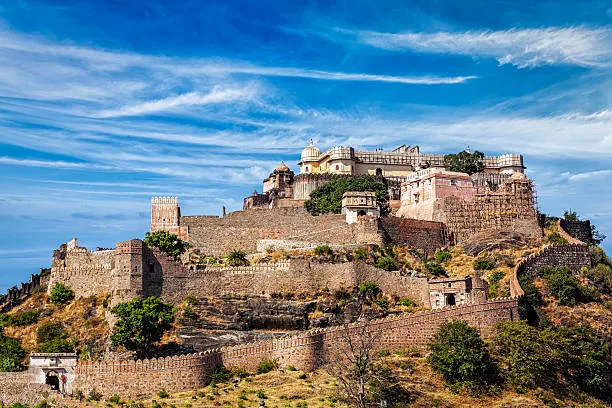
Built in the 15th century by Maharana Kumbha, Kumbhalgarh Fort is famous for its massive 36-kilometer-long wall, the second longest in the world after the Great Wall of China. The fort encompasses 360 temples, massive gates, and an elevation that made it almost invincible to attacks. It is also the birthplace of Maharana Pratap, one of Mewar’s greatest warriors. The interiors of the fort reflect a blend of religious and military architecture, with finely carved temple structures, open courtyards, and strong stone walls that highlight its defensive design.
7. Neemrana Fort: A Royal Retreat

Located near Alwar, Neemrana Fort has been converted into a luxurious heritage hotel. Originally built in the 15th century, the fort showcases Rajputana grandeur with its majestic courtyards, hanging gardens, and intricate jharokhas (overhanging balconies). The interiors have been restored to preserve traditional Rajasthani aesthetics, featuring antique furniture, hand-painted murals, and stone archways that transport visitors to a bygone era.
8. Bhangarh Fort: The Haunted Fortress
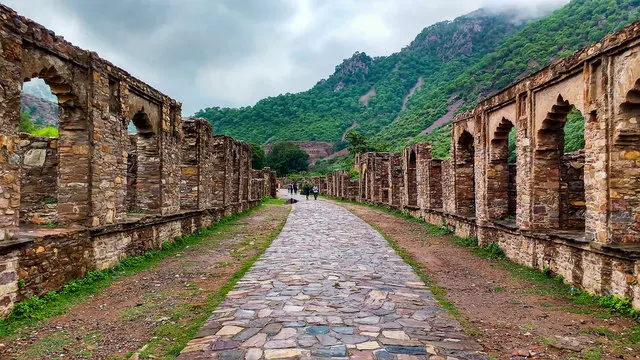
Known for its eerie legends, Bhangarh Fort is one of the most haunted places in India. Built in the 17th century by Raja Bhagwant Das, the fort features massive gateways—Delhi Gate, Phulbari Gate, Ajmeri Gate, and Lahori Gate. Though now in ruins, its surviving temples and palaces still exhibit remarkable craftsmanship. The fort’s design includes arched entrances, carved pillars, and stone courtyards, hinting at its former architectural splendor despite its abandoned state.
9. Lohagarh Fort: The Indestructible Fort
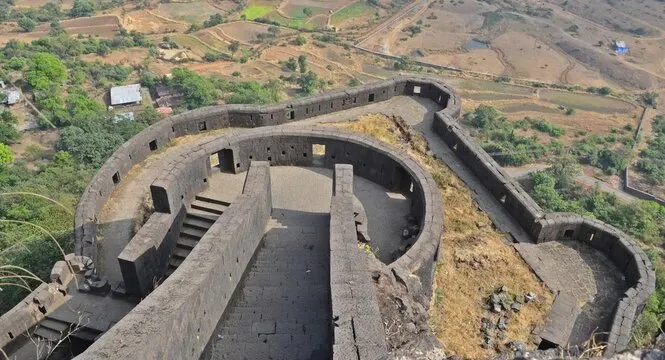
Situated in Bharatpur, Lohagarh Fort lived up to its name, meaning ‘Iron Fort,’ as it withstood numerous attacks, including those by the British. Built by Maharaja Suraj Mal, the fort’s robust architecture made it one of the strongest defensive structures in Rajasthan. It also houses a museum that showcases Bharatpur’s rich history. The interior of the fort includes large halls, sturdy stone walls, and military-style design elements that emphasize strength over ornamentation.
10. Khimsar Fort: A Blend of History and Luxury
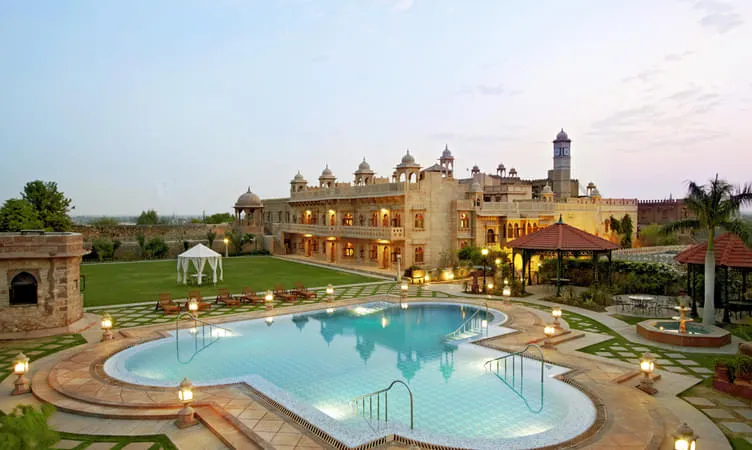
Thrillofillia.com
Built in the 16th century by Rao Karamsiji, a descendant of Jodhpur’s royal family, Khimsar Fort stands on the edge of the Thar Desert. The fort has been partially converted into a heritage hotel, offering visitors a taste of royal life. Despite modern adaptations, its original architecture, including thick walls and intricate carvings, remains intact. The interiors blend rustic Rajput charm with regal elegance, featuring traditional Rajasthani furniture, elaborate ceiling frescoes, and stone courtyards.
Conclusion
The forts of Rajasthan, India, are not just historical monuments; they are timeless testimonies to the architectural brilliance and indomitable spirit of the Rajput rulers. Whether it’s the golden allure of Jaisalmer Fort, the towering walls of Kumbhalgarh, or the haunting ruins of Bhangarh, each fort has a story to tell. Their interior designs reflect an exquisite blend of opulence, artistry, and strategic planning, offering visitors a glimpse into a bygone era of valor, culture, and unparalleled craftsmanship.
